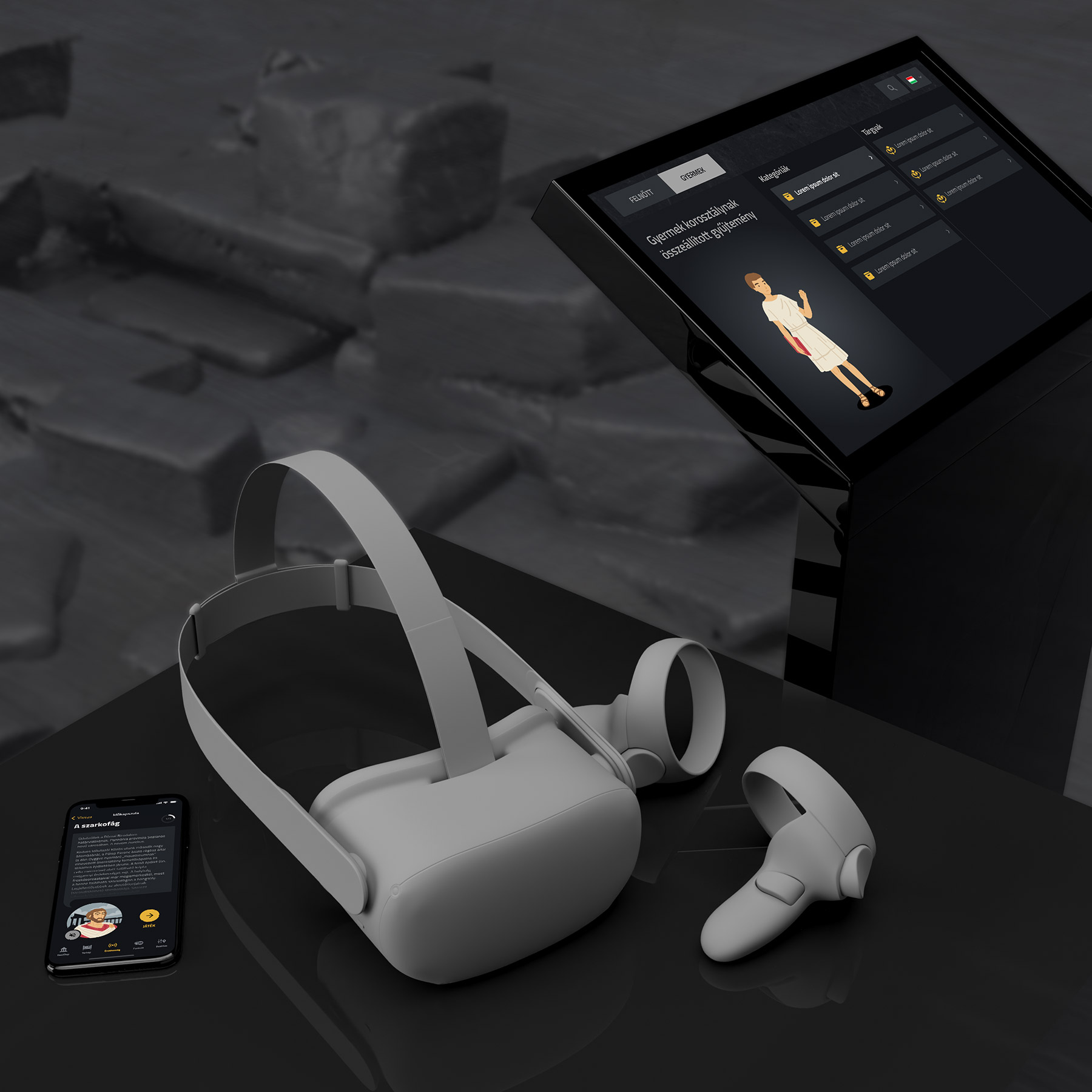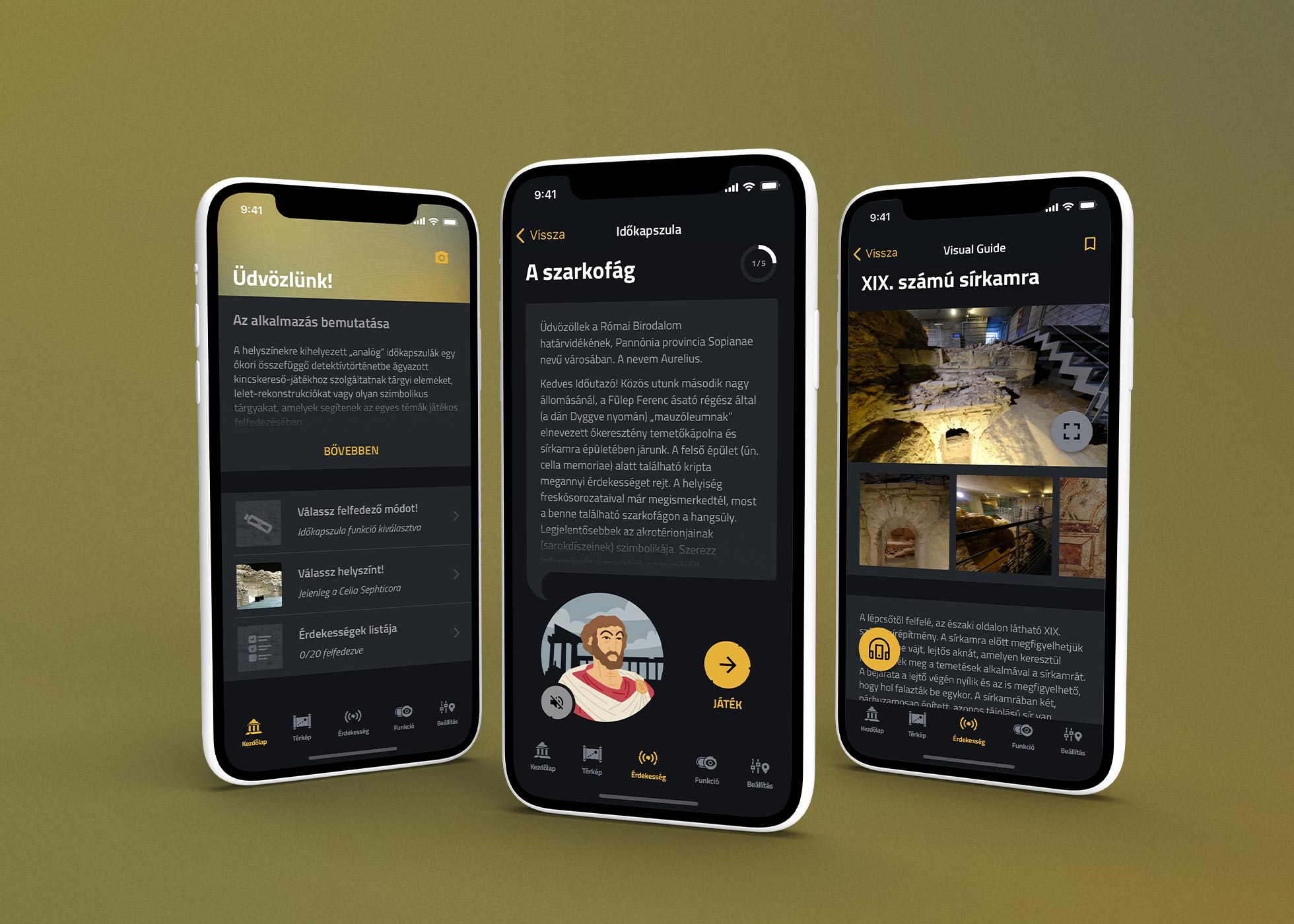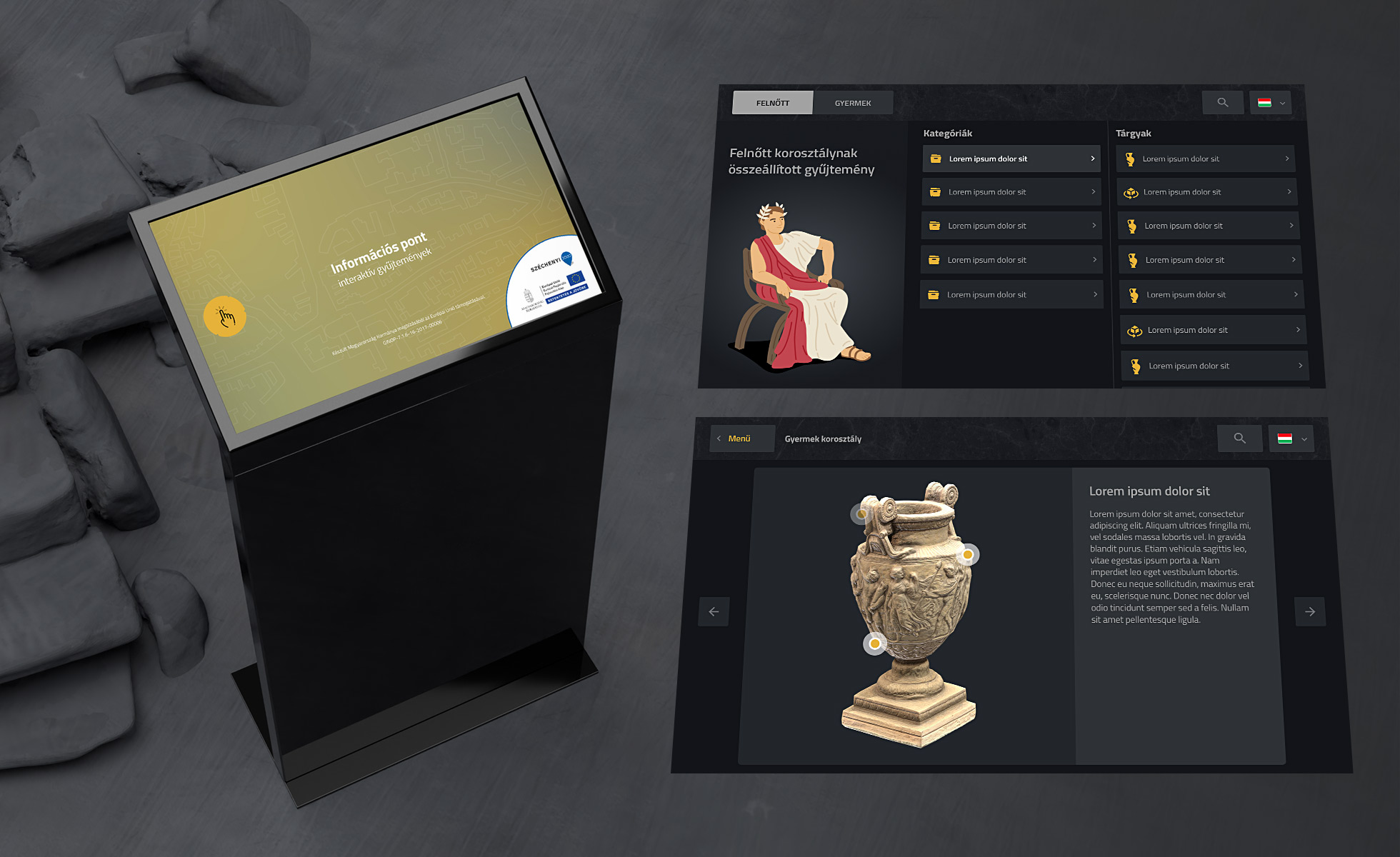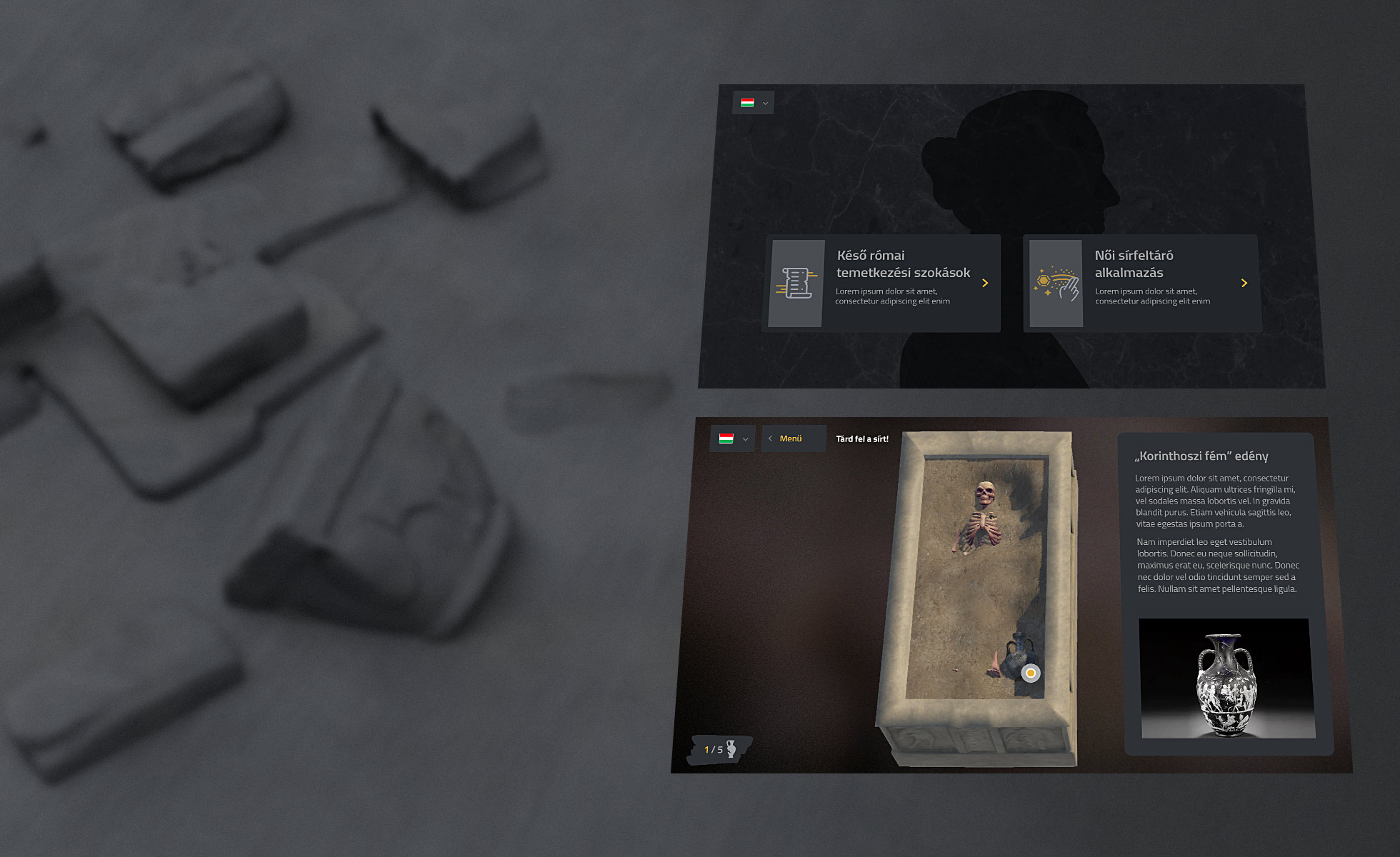We use cookies to improve your browsing experience on our site, show personalized content and analyze site traffic. By choosing "I Accept", you consent to our use of cookies and other tracking technologies.



On behalf of Zsolnay Heritage Management Ltd., we made a complete attraction package for the Cella Septichora Visitor Center and the associated exhibition spaces located in the Ókeresztény Mauzóleum (Early Christian Mausoleum) and Apáca Street 8.


This very complex project required the joint effort of several teams. 3D reconstructions of the tombs of the Roman cemetery in Pécs, several films, a multi-functional visitor mobile application, interactive content managers, an AR photo wall, a VR application, and a museum pedagogic framework were prepared.
Multifunctional visitor mobile application:
The Hidden Heritage of Sopianae visitor application can be divided into two parts. One of them is a Visual Guide that aims to provide further information to visitors. Visitors get access to the information points of the three Cella Septichora Visitor Center locations. Within the app, they can read detailed descriptions, view 3D models of the artefacts and pictures in relation to the information point they are currently at. They can even listen to the descriptions of each information point in Hungarian or English. In the application, the open location points are marked, so we can continue our adventure where we left off.
Another part of the Hidden Heritage of Sopianae application is the Virtual Time Capsule discovery game. The idea of the game is based on a glass time capsule found during the archaeological excavation of the early Christian cemetery. A total of 10 virtual time capsules can be collected in the 3 locations belonging to the Cella Septichora Visitor Center (Cella Septichora Visitor Center, Early Christian Mausoleum, Apáca Street 8.). The time capsules can be viewed as a list in the application, and the iBeacons placed on the map and at the location also indicate which part of the exhibition each capsule belongs to. Each time capsule is connected to a set of tasks consisting of several games, the content of the set of tasks is connected to the exhibition piece. There are several different types of games: quizzes, crossword puzzles, sets and memory games.

Interactive content management system for adults and children:
The application presents a catalogue of objects in the exhibition optimized for children and adults. In child mode, we display less information about the objects and place more emphasis on 3D reconstructions. The application is multilingual, after specifying the selected language, the media content to be displayed will be downloaded upon starting.
In the inactive state, the app displays a screen saver. It will return to this screen after 90 seconds of inactivity. Touching the screen saver takes the user to the home screen. On the left edge of the screen, you can see a stylized Roman-era drawn child/adult figure according to the appropriate setting. The categories appear in the column next to it. By clicking on a specific category, objects belonging to that category appear in a third column. In this case, only those objects and categories to which 3D animation belongs will be listed. By clicking on the list of items, you can open the data sheet of the given item. By clicking on the magnifying glass icon, the user will be taken to a full-screen search interface. The user can type in the search word on a virtual keyboard on the touch-sensitive interface.
Object data sheets: On the data sheet of the given object, a 3d reconstruction of the object is displayed, as well as a short description of the object and the hotspots in the 3d reconstruction and their corresponding descriptions. By clicking on the hotspots, the model turns to the interesting detail marked by the dot, zooms and the description of the given detail appears in the right column.

Tomb excavation game presentation
Available as part of the interactive content management system, in two versions (a sarcophagus with male remains and a brick grave with female remains). In the tomb excavation application, the user can explore the given grave interactively. The grave contains objects that were usually typical of female and male graves in early Christian times.
At the beginning of the game, the tomb is still closed, if the visitor touches the tomb on the touchscreen, it opens and its contents become visible. At first, nothing but soil is visible in the grave, and as the user begins to remove the soil by touching it, the objects and the skeleton of the buried person become visible. If we touch an object, the camera zooms in on it, so we can examine it more easily. Then the panel with the object's information and images appears on the right.
The 3D elements required for the tomb excavation game were created in consultation with archaeological experts, in order to ensure the highest degree of authenticity.

Custom development
Let's get in touch!